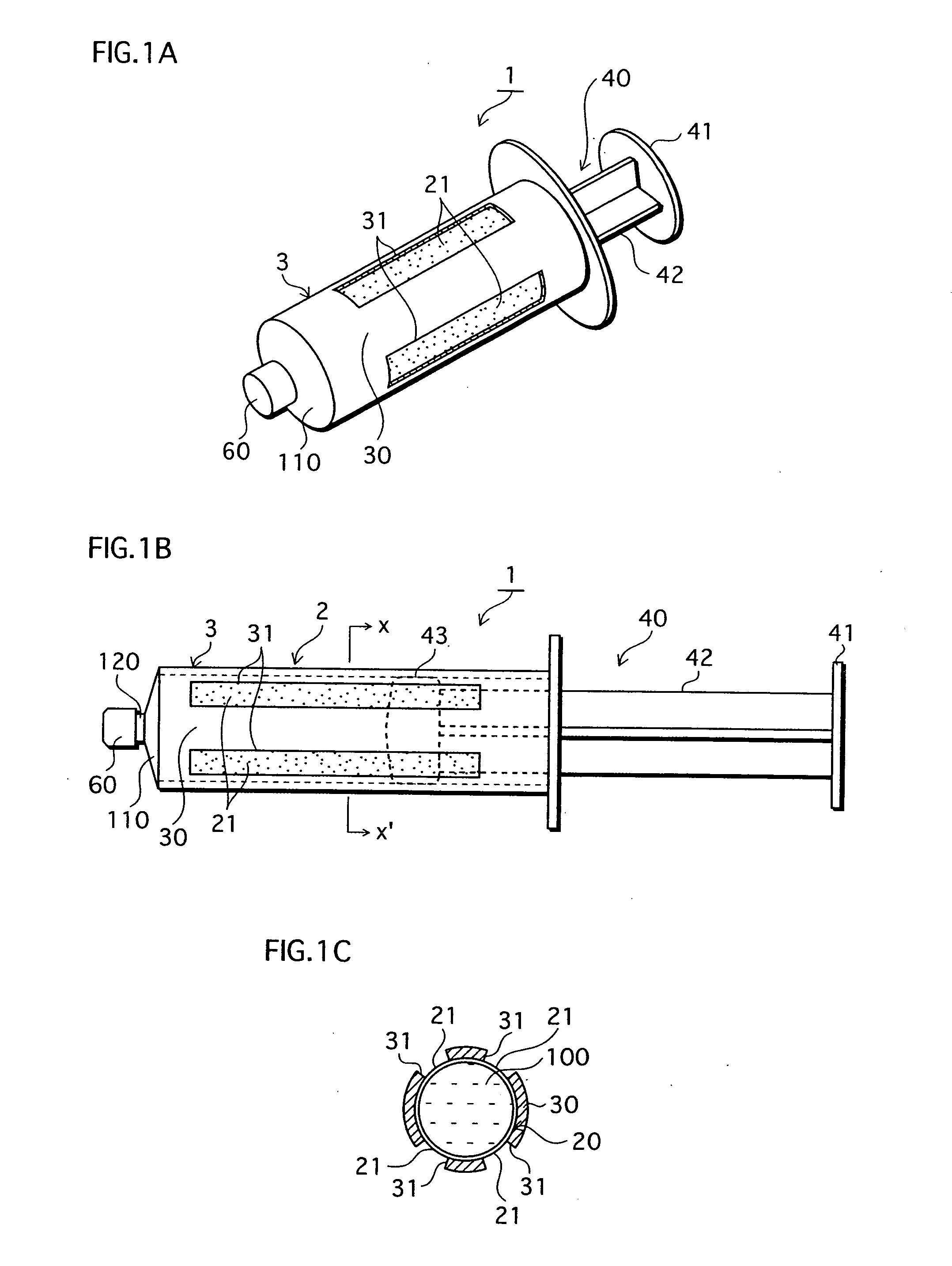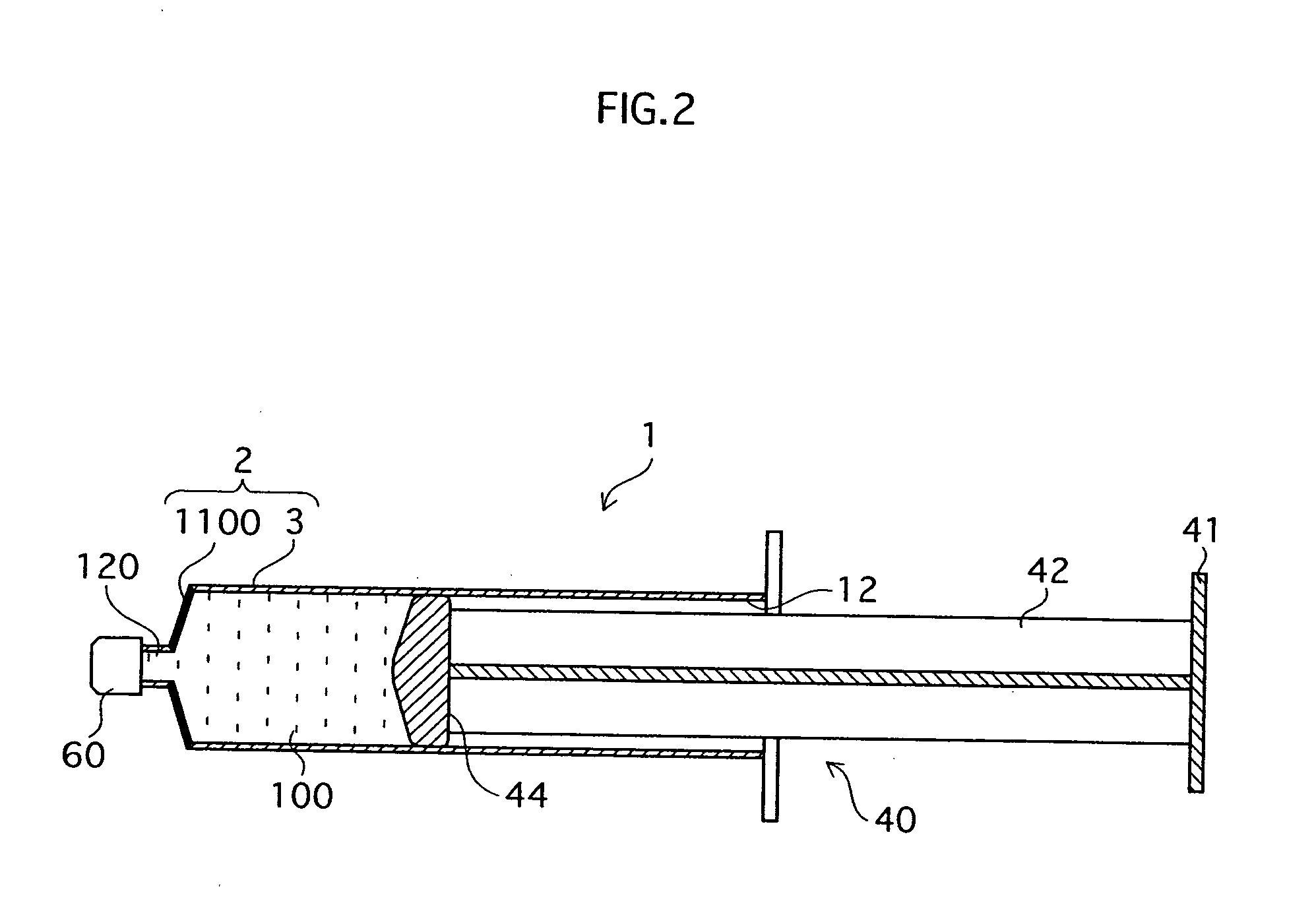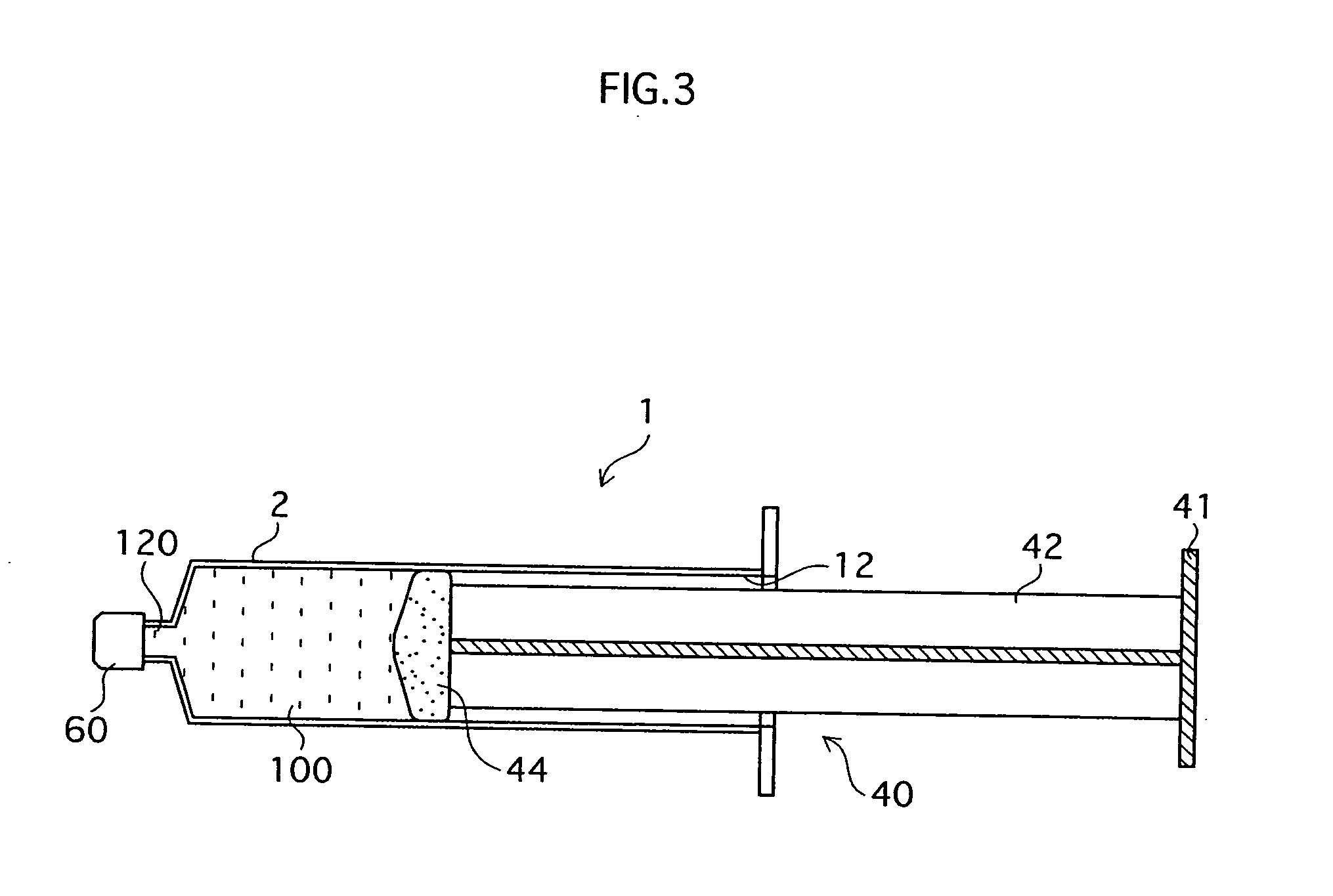Cell handling device, human tissue regeneration composition, and human tissue regeneration method
a cell and composition technology, applied in the field of regenerative medical treatment, can solve the problems of adversely affecting the cells, difficult to implement cell operations for anyone not in training advanced techniques, and in possession of well-equipped facilities, and achieve the effect of easy injection into the body
- Summary
- Abstract
- Description
- Claims
- Application Information
AI Technical Summary
Benefits of technology
Problems solved by technology
Method used
Image
Examples
first embodiment
[0074] 1-1. Construction of Syringe-Type Cell Handling Device 1
[0075]FIGS. 1A-1C show the structure of syringe-type cell handling device 1 of the First Embodiment that is one example of the cell handling device of the present invention. FIG. 1A is a perspective view, FIG. 1B is a side elevation, and FIG. 1C is a cross-section through X-X′ of FIG. 1B.
[0076] The syringe-type cell handling device 1 shown in FIG. 1 is broadly composed of a syringe main body 2 and a plunger (also referred to as a pressing component or as a piston) 40. A cell suspension 100 is held within the syringe body 2.
[0077] The syringe main body 2 is composed of cylindrical body 3 made by injection molding a material that is non-adhesive with respect to cells to form a cylinder, and a gas permeable film 20 which is described below.
[0078] The cylindrical body 3 is formed with a leur 120 protruding from a disk shaped front section 110 at a front-end surface. Under normal conditions, a cap 60 is fitted to the tip o...
second embodiment
[0114]FIG. 2 is a cross-sectional drawing showing the construction of a syringe-type cell handling device 1 of the Second Embodiment that is an example of a cell handling device of the present invention. The differences from the First Embodiment are that through holes are not provided in the surrounding walls of a cylindrical body 3 in a syringe main body 2, and that a gas permeable region is formed instead in a front section 1100 of the cylindrical body 3. Specifically, this gas permeable region may be formed when forming the syringe main body 2 by using a gas permeable material to make the front section 1100, or by opening through holes in the front section 1100 and fusing or sticking a gas permeable film over the through holes, thereby making the front section 1100 liquid-tight.
[0115] The same type of cell non-adhesive and gas permeable materials as in the First Embodiment can be used. Generally, the tip of a leur 120 has a cap 60 fitted, as shown in FIG. 2, or contains a resin ...
third embodiment
[0121]FIG. 3 is a cross-sectional drawing showing the construction of a syringe-type cell handling device 1 of the Third Embodiment of the cell handling device of the present invention. The differences distinguishing the Third Embodiment from the First and Second Embodiments described above are that the syringe main body 2 is constructed in a cylindrical shape resembling the body of a conventional syringe, and that a plunger head 44 is constructed from a gas permeable material. Any of the materials described in the First and Second Embodiments can be used as the gas permeable material.
[0122] The plunger head 44 is fixed to the syringe-side tip of the body 42 of the plunger 40 and fits tightly against the internal walls of the syringe main body 2 so as to form a liquid-tight seal therewith. Here, as the plunger head 44 is exclusively permeable by gases, cell suspension solution 100 does not leak to the exterior.
[0123] Further, in the Third Embodiment too, constructing both the syri...
PUM
 Login to View More
Login to View More Abstract
Description
Claims
Application Information
 Login to View More
Login to View More - R&D
- Intellectual Property
- Life Sciences
- Materials
- Tech Scout
- Unparalleled Data Quality
- Higher Quality Content
- 60% Fewer Hallucinations
Browse by: Latest US Patents, China's latest patents, Technical Efficacy Thesaurus, Application Domain, Technology Topic, Popular Technical Reports.
© 2025 PatSnap. All rights reserved.Legal|Privacy policy|Modern Slavery Act Transparency Statement|Sitemap|About US| Contact US: help@patsnap.com



